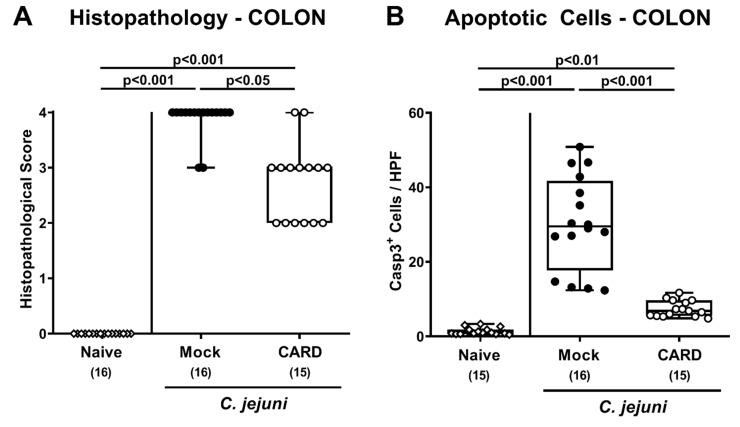Figure 4.
Histopathological and apoptotic responses in the large intestines following oral cardamom essential oil application to C. jejuni-infected microbiota-depleted IL-10−/− mice. Microbiota-depleted IL-10−/− mice were infected with C. jejuni strain 81–176 on days 0 and 1 by gavage and perorally challenged with cardamom essential oil (CARD; white circles) via the drinking water starting on day 2 post-infection, whereas mock control mice received vehicle (black circles). On day 6 post-infection, the (A) histopathological changes were quantitatively assessed in hematoxylin and eosin stained colonic paraffin sections, using a respective scoring system. In addition, (B) apoptotic colonic epithelial cells positive for cleaved caspase3 (Casp3+) were enumerated in immunohistochemically stained large intestinal paraffin sections (indicated are the median numbers of positively stained cells from six high power fields (HPF, 400× magnification) per animal). Naive mice (open diamonds) served as untreated and uninfected controls. The box plots indicating the 75th and the 25th percentiles of the median (black bar within box), the total range, the levels of significance (p values) as calculated with the Kruskal–Wallis test and Dunn’s post-correction, and the number of analyzed mice (in parentheses) are shown. Data were pooled from four independent experiments.

